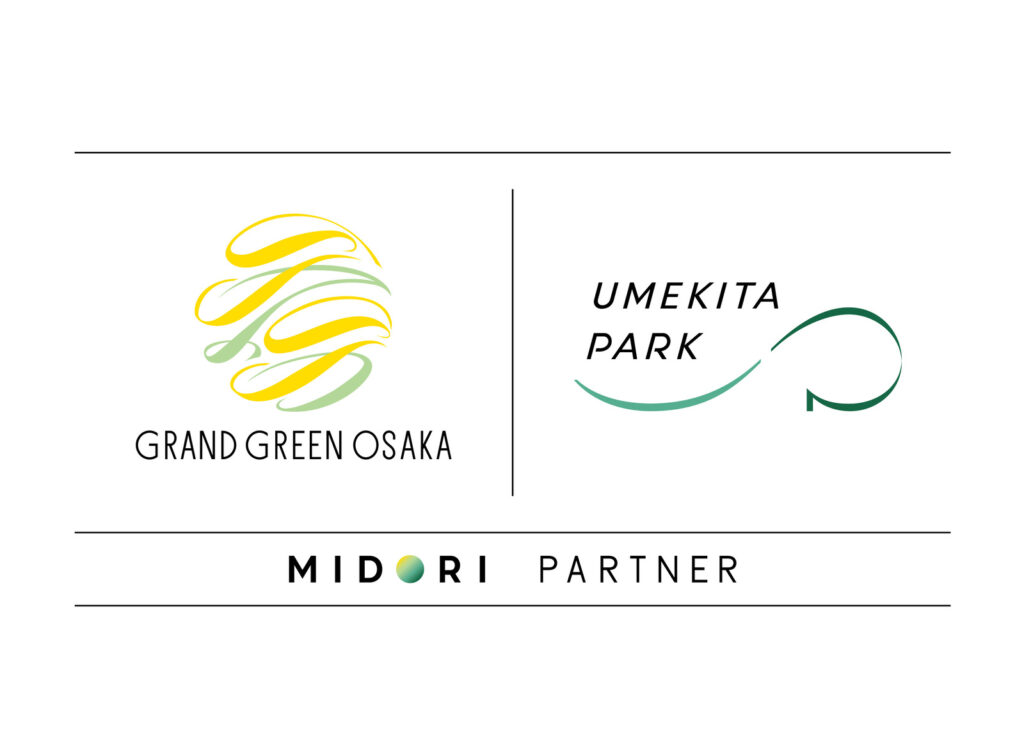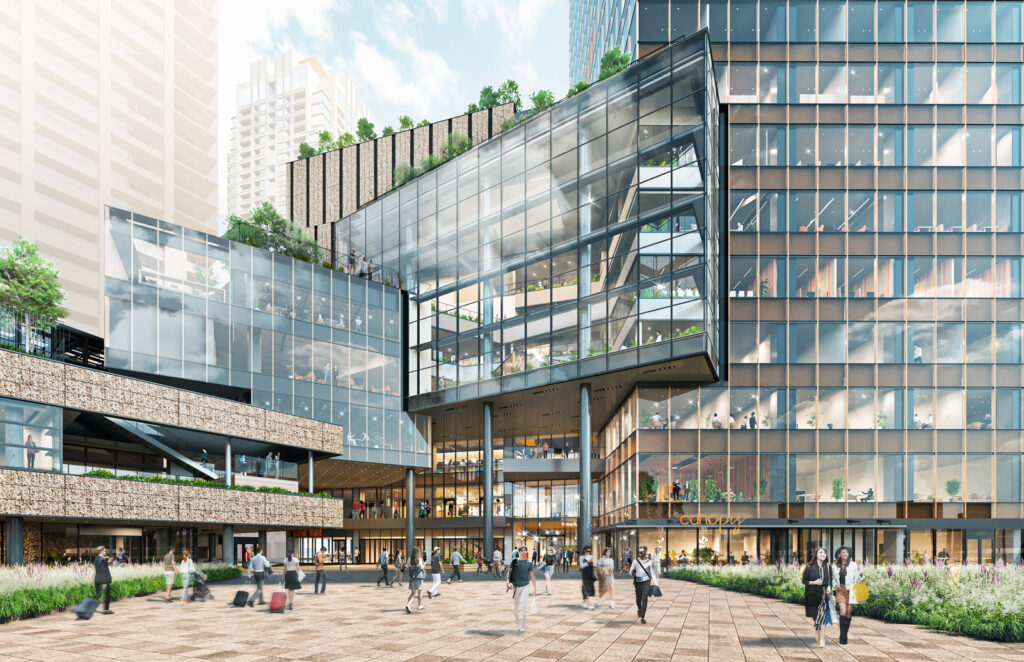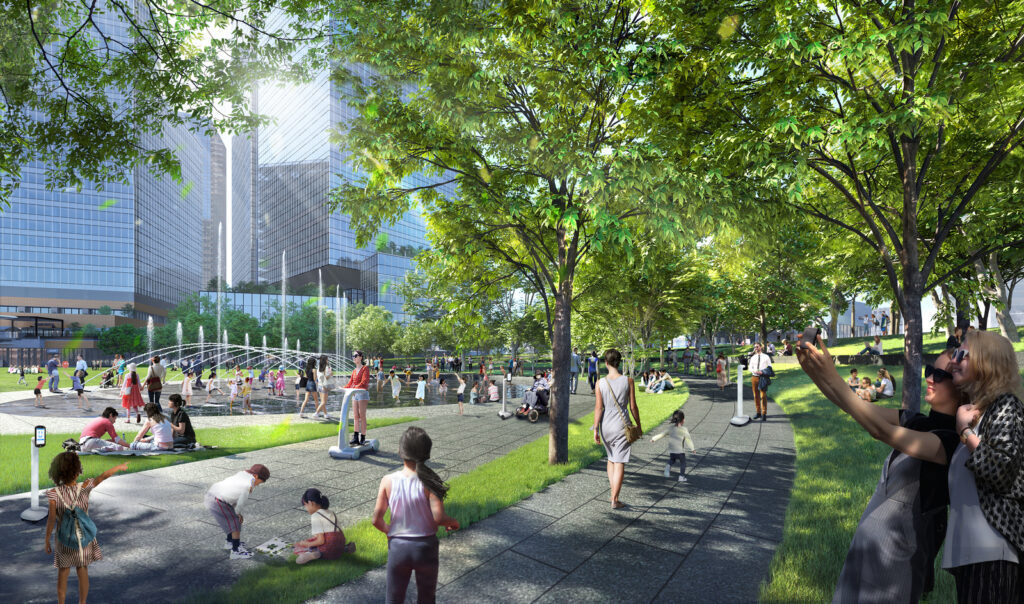Upgrade Any Trip to Osaka with a Restful and Restorative Hotel Stay
Theme:Hotel Hankyu Gran Respire Osaka: Interior Design
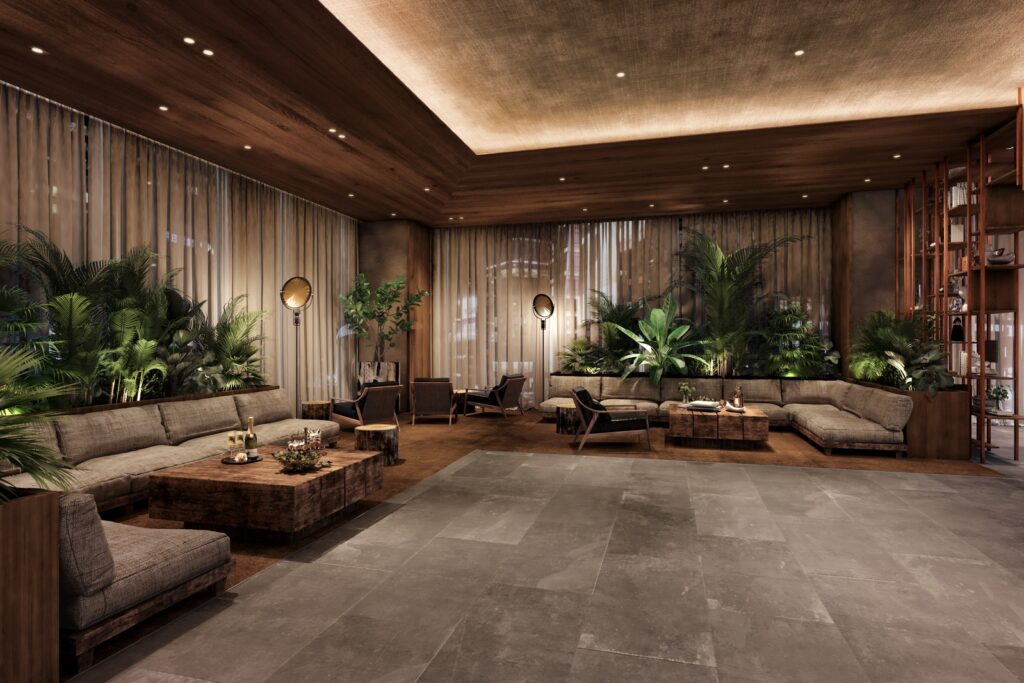
Hotel Hankyu Gran Respire Osaka, one of the major hotels to go up in the Grand Green Osaka urban redevelopment area, is steadily preparing to open in the latter half of the 2024 fiscal year. We interviewed Mr. Muneto Chikakuni, the individual responsible for the development; Ms. Gao Jing, the project designer; and Mr. Kenji Muro from Garde Co., Ltd., the firm overseeing the interior design.

Hotel Hankyu Gran Respire Osaka (hereafter referred to as Gran Respire) is one of the major hotels in Grand Green Osaka, together with the Waldorf Astoria Osaka and the Canopy by Hilton Osaka Umeda. It is an upscale hotel under the Respire brand operated by Hankyu Hanshin Hotels.
Mr. Chikakuni stresses that along with the two foreign-affiliated hotels, visitors to Osaka now have a wider choice: “All three have unique characteristics, so we anticipate that visitors will choose among them based on their travel purpose and style. What they all share, though, is the importance placed on the experience of Grand Green Osaka and the park at its heart.”
Chikakuni notes that although a sister hotel—the Hotel Hankyu Respire Osaka—has already opened, the Gran Respire strives for an even higher degree of comfort.
“In this instance, ‘respire’ is intended as a portmanteau of ‘rest’ and ‘inspire,’ conveying a sense of recuperation and invigoration. The hotel benefits from a very convenient location adjacent to the JR Osaka Station. The approach to the South District Rental Building and lobby on the fifth floor of the South Tower is designed to create a relaxing atmosphere by diverting you through the park away from the hustle and bustle of the station. The abundance of lush greenery throughout the hotel will help set visitors at ease after a day of sightseeing.”

The concept behind the hotel is “a comfortable and cozy place to relax in the city.” In order to bring this about, Garde—with its extensive design experience with luxury brands—was put in charge of the interior. In developing the design, President Muro paid attention to the building’s relationship with its surroundings. He noted, “Given its location—set in a 4.5-hectare urban park, close to the station, with a spa on the lower floor—we designed the interior with ‘comfort’ as the keyword, bearing in mind the flow of visitors. We wanted to create a smooth flow in the space from the first-floor entrance to the guest rooms in particular, so that guests can easily switch between ‘on’ and ‘off’ mode.”
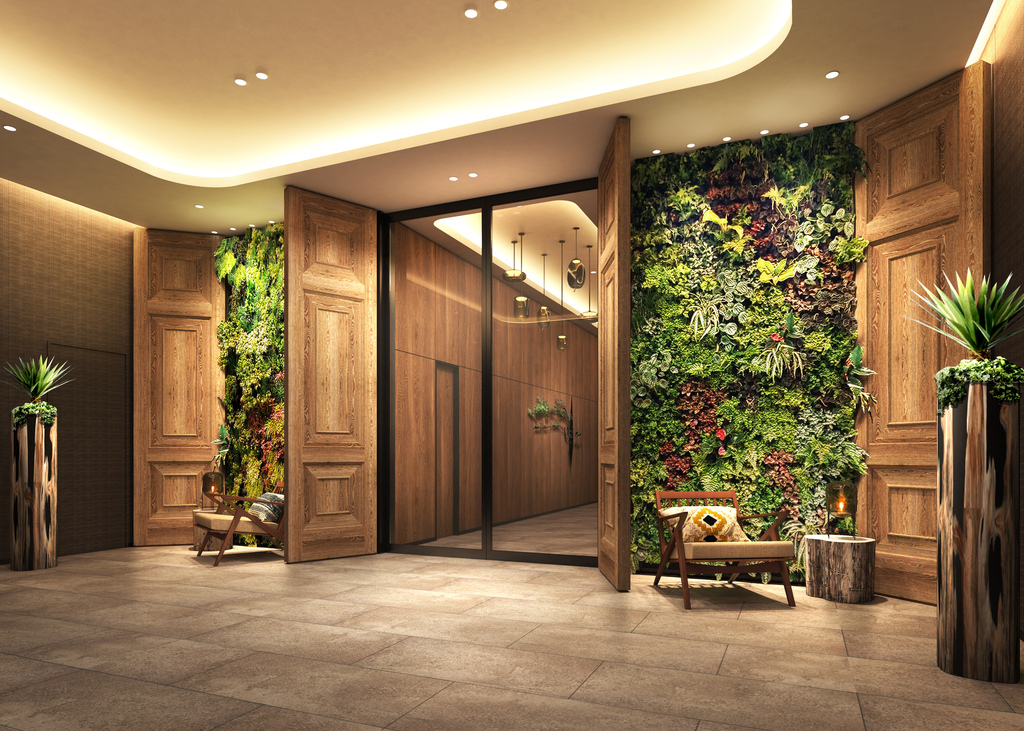
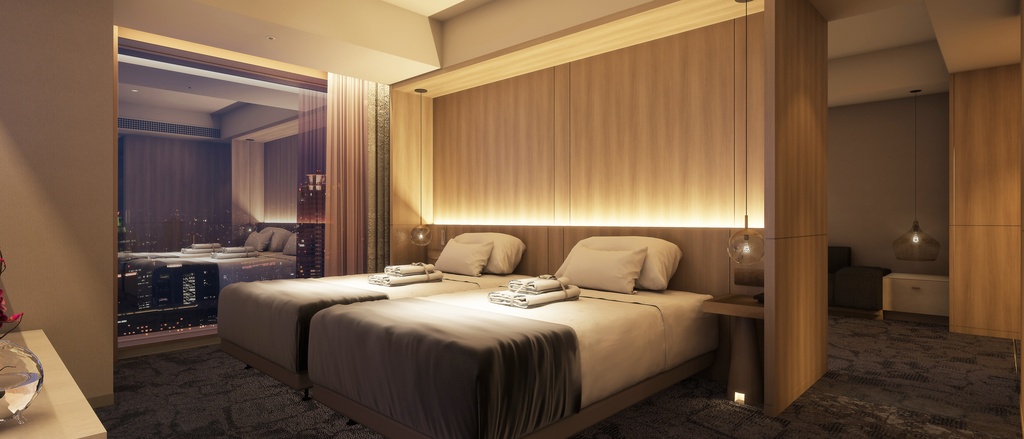
Mr. Muro’s stated goal was to achieve a “subtractive design,” in order to create a serene ambiance.
He explains, “We tried to avoid excessive decoration, with minimal elements to express design. The focus was on four points: color scheme, materials, plants, and natural light. For example, the lace curtains used for the lobby, lounge, and club floors are dyed in a gradation of earth hues. This creates a unique nuance when natural light enters the room, with the ambience gradually changing throughout the day. Basic earth tones are also used for the ceilings, walls, and floors, with every detail carefully considered, so that guests can relax in a naturally comfortable environment.”
Muro also pointed out that the expansive windows in the guest rooms contribute to a greater feeling of openness. He explained, “Panoramic windows running from floor to ceiling make the room feel larger. And I believe that the views through the windows afford guests both mental and physical relaxation when returning to their room from the spa on the lower floor.”

On the other hand, Ms. Gao paid particular attention to the surroundings when designing the exterior of the hotel. She explained, “I have handled buildings in parks before, but in those cases the prevailing concept was of a park in the city. However, Grand Green Osaka started with the overall concept of a city in the park. I believe this concept of a relaxing space amidst lush greenery is carried out consistently in both architecture and design.”

Gao highlights that the hotel’s park-centric design shares a common philosophy throughout both the interior and exterior.
She elaborated, “The hotel was designed under the concept of the entire building rising out of the ground. The use of full-height sashes enhances the sense of openness. Luxurious metallic hues used in the sashes complement the gradation of earthen hues without distracting from them, simultaneously contributing to the sophistication of the hotel. The interiors designed by Garde use fluctuations in color caused by natural light throughout the interior, and we wanted a similar effect across the exterior. On the other hand, the architectural structure is characterized by its lean and smart proportions, which draw in the surrounding architecture. Our aim is to nestle subtly in the park.”

Guests with all manner of purposes, whether sightseeing, entertainment, or business, can relax and recharge after a long day. The rethinking of what is most required in a hotel means that a stay at the Gran Respire, where guests are welcomed in a sophisticated manner suited to a new era, will allow one to discover a new Osaka.
Photography: KENICHI FUJIMOTO Text: JUNKO KUBODERA

 Share on Twitter
Share on Twitter Share on Facebook
Share on Facebook